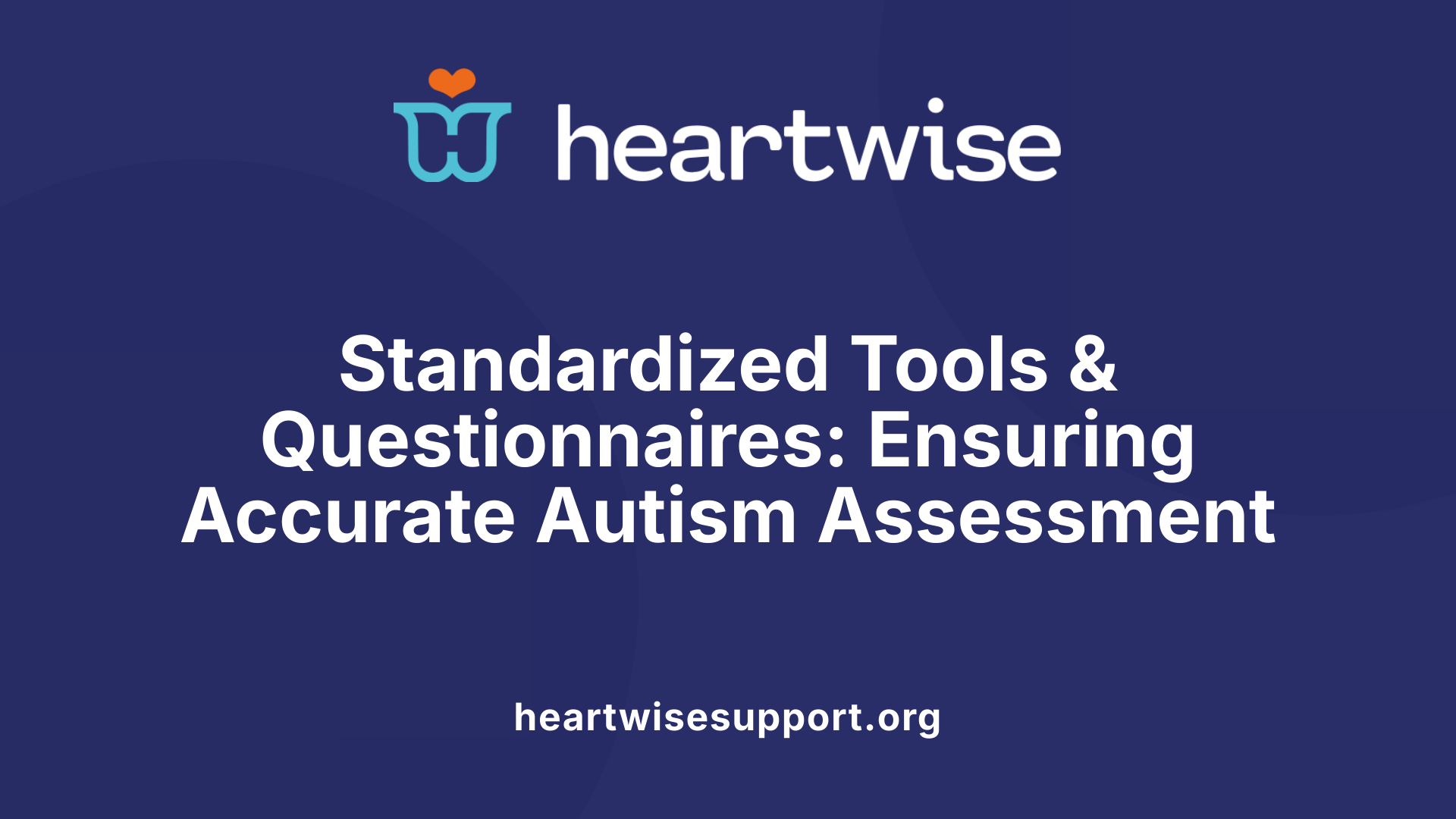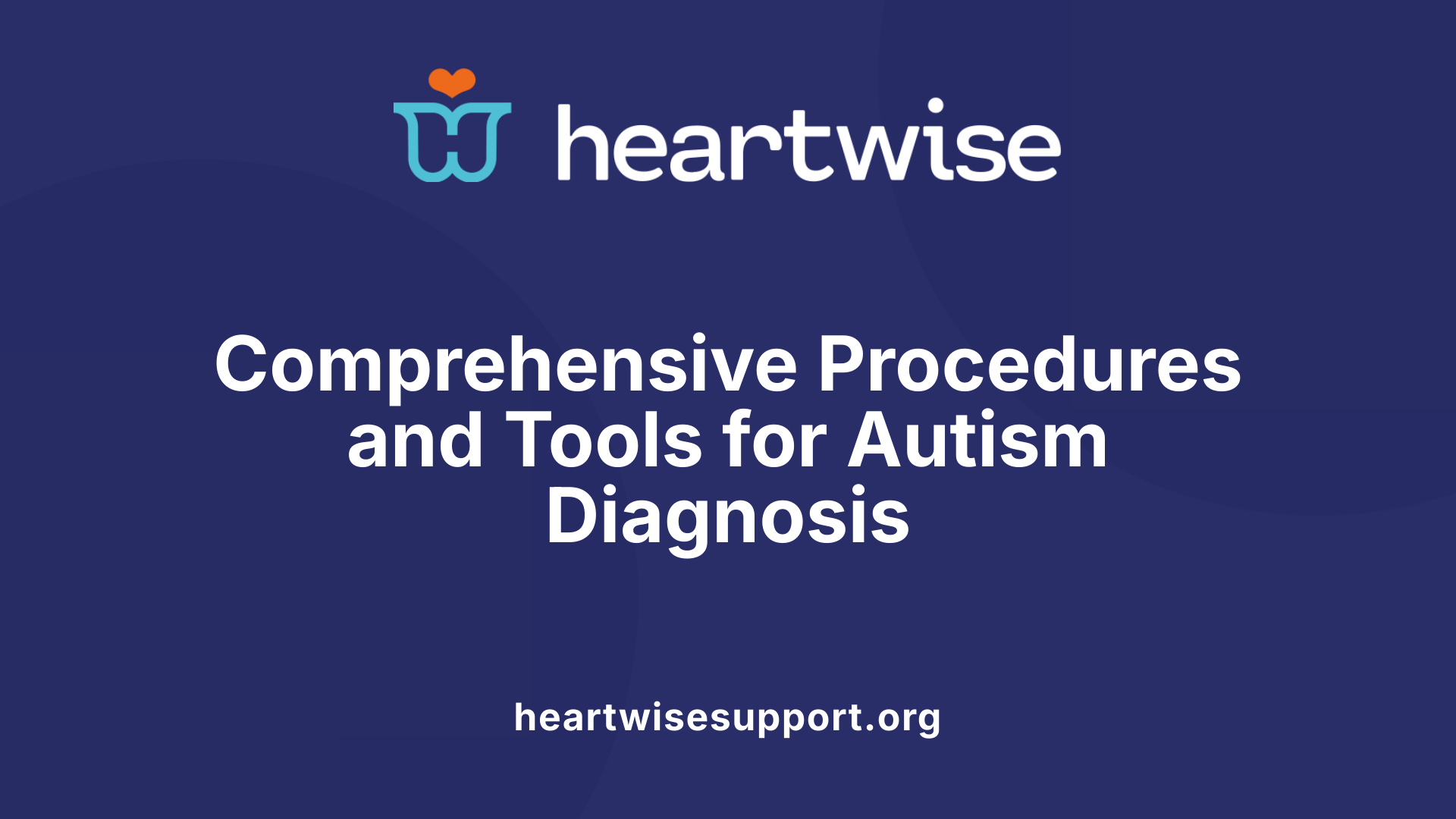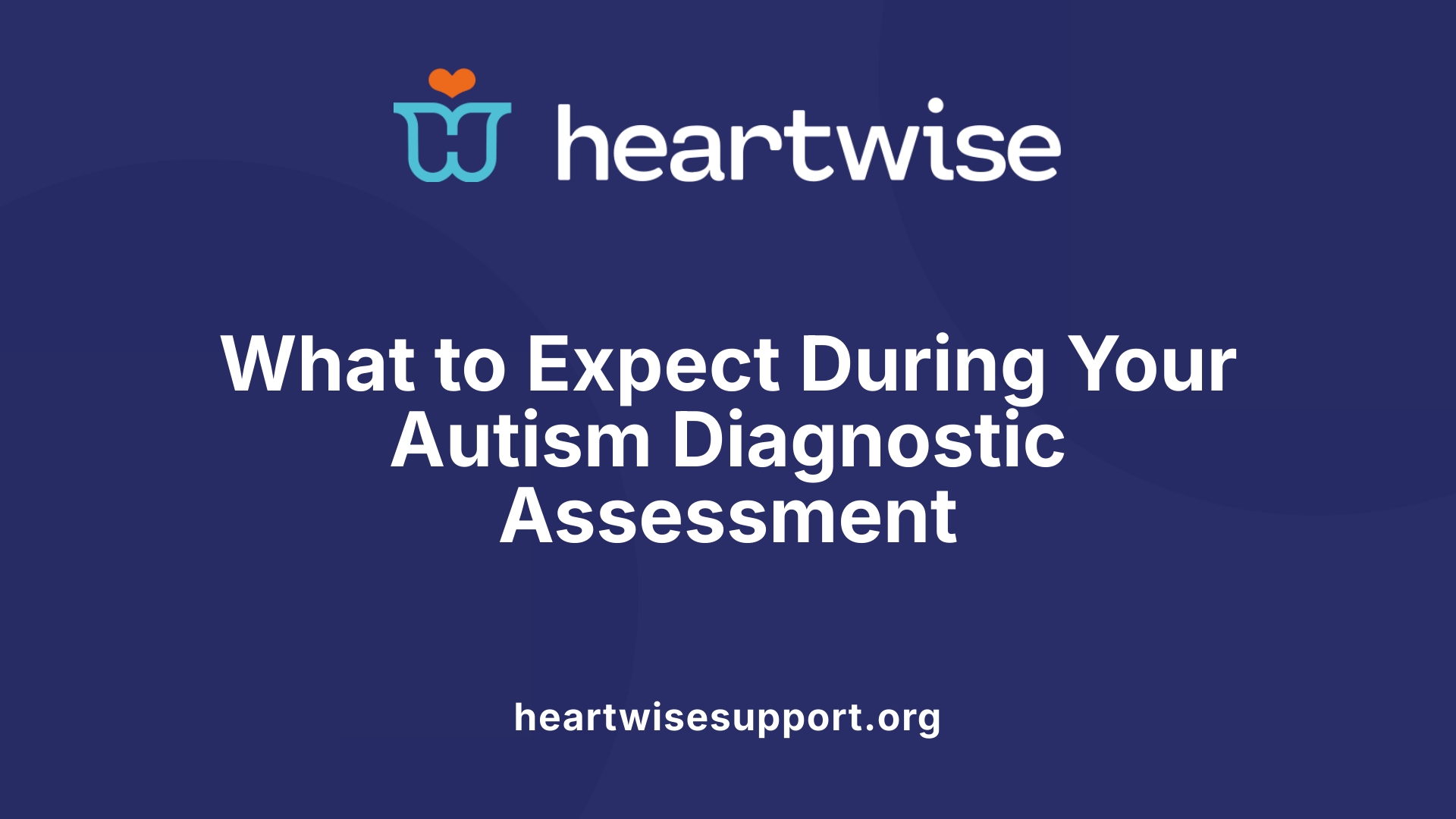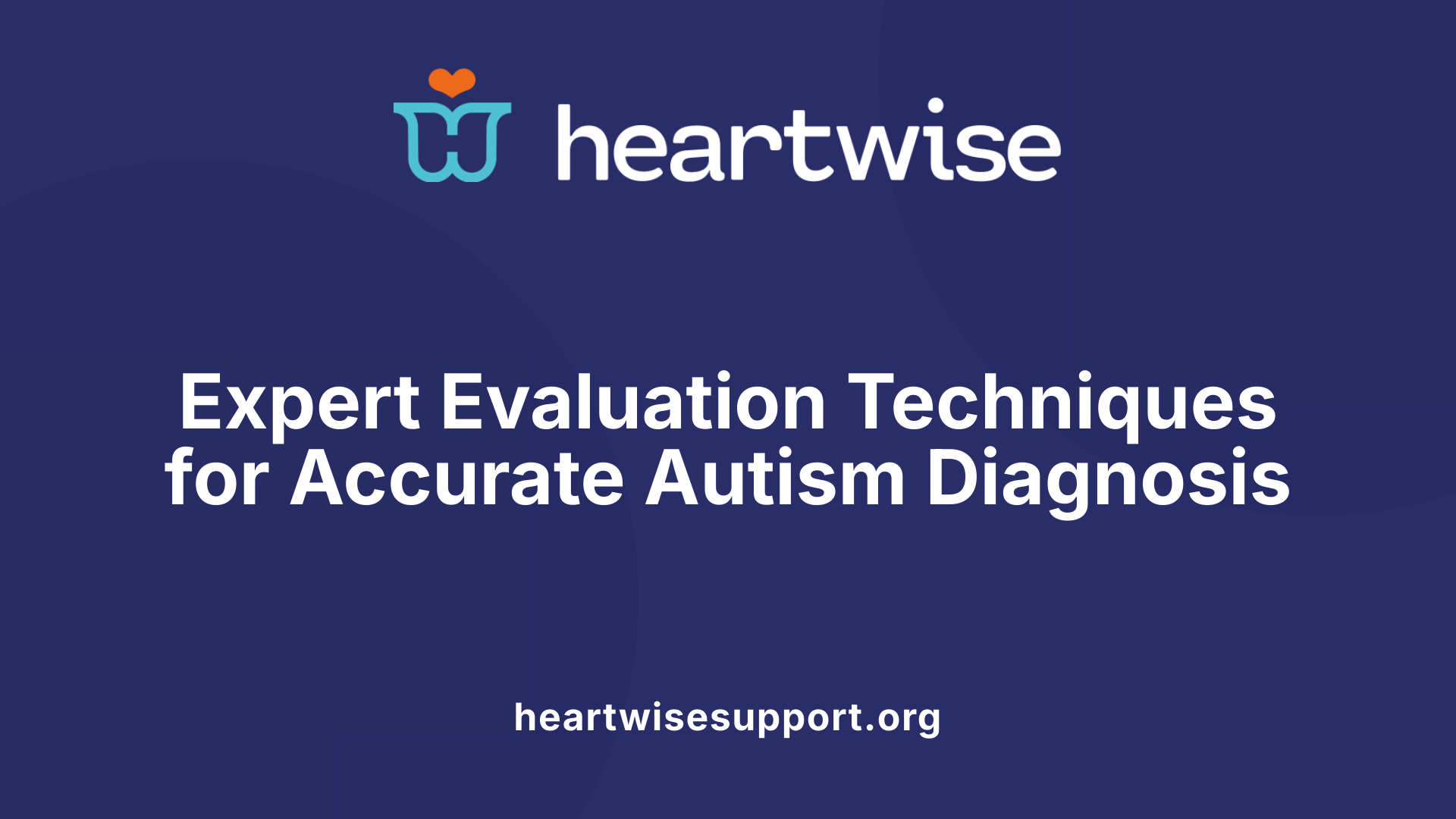Understanding the Significance of Early Detection and Accurate Diagnosis
Early mental health screening and assessment are crucial in identifying autism spectrum disorder (ASD). Since there is no medical test for autism, diagnosis relies heavily on behavioral evaluations, developmental history, and specialized screening tools. This comprehensive approach not only facilitates early intervention but also aids in planning appropriate support services, ultimately improving long-term outcomes for individuals on the spectrum.
The Importance of Timely Recognition of Autism Symptoms
Early detection and diagnosis of autism spectrum disorder (ASD) are crucial because they open the door to interventions that can significantly alter a child's developmental trajectory. When autism is identified in its initial years, typically before the age of two, children can benefit from targeted therapies that support communication, social skills, and behavioral adaptation. These early interventions, which include behavioral therapies like Applied Behavioral Analysis (ABA), speech therapy, and occupational therapy, leverage the brain's plasticity during childhood, making learning and adaptation more effective.
Recognizing autism symptoms early can also help families and caregivers better understand their child's needs. This understanding allows them to access appropriate educational tools, medical support, and community resources to foster a supportive environment. Early diagnosis thus reduces the risk of long-term challenges related to social integration, independence, and mental health.
The impact of early identification extends beyond immediate developmental gains. It can influence educational planning, social relationships, and emotional well-being, setting a foundation for improved life outcomes. Health organizations like the CDC and the American Academy of Pediatrics recommend autism screening at 18 and 24 months, emphasizing that early detection is essential for providing the best possible support from the outset.
In summary, early detection benefits not only the child's immediate development but also their future quality of life. It empowers families to make informed decisions and ensures that children with autism receive the timely, specialized help that can pave the way for a more successful and fulfilling life journey.
Diagnostic Criteria and Standards for Autism Spectrum Disorder
What are the diagnostic criteria and standards used to identify autism spectrum disorder?
Diagnosing autism spectrum disorder (ASD) mainly involves evaluating behaviors based on established clinical guidelines. The primary standards used worldwide are the Diagnostic and Statistical Manual of Mental Disorders, Fifth Edition (DSM-5), and the International Classification of Diseases, 11th Revision (ICD-11).
According to the DSM-5, autism is characterized by persistent deficits in social communication and social interaction across multiple contexts. This includes difficulties with social-emotional reciprocity, nonverbal communication behaviors, and forming or maintaining relationships. Additionally, individuals exhibit restricted and repetitive patterns of behaviors, interests, or activities, such as stereotyped movements, insistence on sameness, or sensory sensitivities. These symptoms typically manifest in early childhood and cause significant impairment.
Similarly, the ICD-11 emphasizes difficulties in social communication and interaction, along with inflexible, repetitive behaviors and sensory issues. The criteria highlight that onset occurs in early developmental periods and must impact daily functioning.
The assessment process centers on behavioral evaluations, which are supplemented by developmental history, observations, and reports from family or educators. In young children, screening is often followed by comprehensive evaluations by specialists such as developmental pediatricians, psychologists, or speech therapists. These assessments may include structured observations like the Autism Diagnostic Observation Schedule (ADOS) and questionnaires such as the Autism Diagnostic Interview-Revised (ADI-R).
In older children and adults, diagnosis involves examining social skills, communication abilities, sensory processing, and behavioral patterns. Professionals gather detailed histories and utilize standardized tools to support their clinical judgment. Early diagnosis, ideally by age 2, allows timely intervention and support, which can significantly improve outcomes.
Overall, diagnostic standards aim to provide a consistent approach to identifying autism, ensuring individuals receive accurate diagnoses and appropriate services based on comprehensive behavioral evaluation.
Standardized Tools and Questionnaires in Autism Assessment
 Are there standardized assessments and questionnaires used to screen or diagnose autism?
Are there standardized assessments and questionnaires used to screen or diagnose autism?
Yes, a variety of standardized tools and questionnaires are essential in the process of screening and diagnosing autism spectrum disorder (ASD). Early screening often includes questionnaires such as the Modified Checklist for Autism in Toddlers, Revised with Follow-up (M-CHAT-R/F). This parent-report tool is widely used for children between 16 to 30 months to detect early signs of autism.
For a formal diagnosis, clinicians employ comprehensive assessments like the Autism Diagnostic Interview-Revised (ADI-R) and the Autism Diagnostic Observation Schedule (ADOS). These are considered gold-standard diagnostic instruments, combining structured interviews and observational procedures to evaluate social communication, behavior patterns, and repetitive behaviors.
Additional tools support clinical judgment and symptom characterization. The Childhood Autism Rating Scale (CARS) and the Gilliam Autism Rating Scale (GARS) help quantify symptom severity and assist in diagnostic decision-making.
Cognitive and developmental assessments also play a vital role. Standardized tests like the Wechsler Intelligence Scale for Children (WISC) and the Wechsler Adult Intelligence Scale (WAIS) evaluate intellectual functioning, which can influence diagnosis and intervention planning. For children with language delays or nonverbal status, non-verbal assessments such as the Universal Nonverbal Intelligence Test (UNIT) provide relevant information.
Speech and language evaluations further clarify communication abilities and help tailor intervention strategies. The combined use of questionnaires, observational tools, and cognitive assessments offers a comprehensive picture of an individual’s strengths and challenges.
In recent years, specialized screening and diagnostic tools for adults, including self-report questionnaires like the Autism Spectrum Quotient (AQ), have gained importance in recognizing autism beyond childhood. Overall, these assessments and questionnaires are indispensable for accurately identifying autism, informing treatment approaches, and accessing support services.
For further information, search terms like "autism screening assessment tools" can guide individuals and professionals to explore available resources and support options.
Procedures and Methods for Diagnosing Autism

What are the common assessment tools and procedures used to diagnose autism spectrum disorder?
Diagnosing autism spectrum disorder (ASD) involves a thorough and comprehensive process that combines multiple methods to accurately identify the condition. It is not based on a single test but rather a mixture of behavioral observations, developmental history, and formal assessments conducted by trained professionals.
Behavioral observation is a core part of the diagnostic process. Clinicians observe how a child interacts socially, communicates, and behaves during structured activities. Standardized tools like the Autism Diagnostic Observation Schedule (ADOS) are designed specifically for this purpose. ADOS involves engaging the individual in activities to assess social interaction, communication skills, and repetitive behaviors, providing valuable insights into their functioning.
Developmental history plays a vital role as well. Through interviews with parents or caregivers, specialists gather detailed information about the child's early milestones, social skills, language development, and any concerning behaviors. The Autism Diagnostic Interview-Revised (ADI-R) is a comprehensive structured interview that delves into developmental history and current behaviors, serving as a cornerstone in the diagnosis.
To support the diagnostic process, a multimodal assessment approach is employed. This involves combining observational findings, detailed interviews, and various assessment scales such as the Child Autism Rating Scale (CARS) and the Gilliam Autism Rating Scale (GARS). These tools help rate symptom severity and guide clinical judgment.
Early screening questionnaires, including the Modified Checklist for Autism in Toddlers (M-CHAT) and the Social Communication Questionnaire (SCQ), are often used to identify children at risk, prompting further evaluation.
Ultimately, this multidimensional approach allows healthcare professionals to differentiate ASD from other developmental conditions, determine severity, and plan appropriate interventions. A collaborative effort involving psychologists, developmental pediatricians, speech-language therapists, and occupational therapists ensures that all facets of an individual's profile are considered.
| Assessment Tool | Description | Age Range | Purpose |
|---|---|---|---|
| ADOS | Structured assessment to observe social and communication behaviors | All ages | Diagnostic evaluation |
| ADI-R | Parent interview focusing on developmental history and current behaviors | All ages | Supporting diagnosis |
| CARS | Rating scale to assess severity of autism symptoms | Children | Severity rating |
| GARS | Screening to identify behaviors associated with autism | Children | Initial screening |
| M-CHAT | Parent questionnaire for early detection in toddlers | 16-30 months | Early screening |
| SCQ | Behavioral screening questionnaire | 4 years and up | Screening/assessment |
This comprehensive, multimodal assessment approach ensures that no developmental aspect is overlooked, leading to accurate diagnosis and effective intervention planning.
What to Expect During the Diagnostic Process

What should I expect during the diagnostic assessment process for autism?
When undergoing an autism diagnosis, the process involves several steps conducted by a qualified healthcare team. This team typically includes psychologists, developmental pediatricians, speech therapists, and other specialists.
A primary component is a series of clinical interviews. These interviews gather detailed information about the individual's developmental history, communication skills, social interactions, and behavioral patterns. Parents, caregivers, and teachers may be asked about milestones, routines, sensory experiences, and challenges faced.
Alongside interviews, behavioral observations are conducted. The professionals observe how the individual interacts during assessments, noting social engagement, communication, repetitive behaviors, and responses to sensory stimuli. Observation provides essential insights that questionnaires or reports alone might miss.
A comprehensive evaluation is performed, often including standardized tests and checklists tailored to different age groups. For children, tools like the M-CHAT or the Autism Diagnostic Observation Schedule (ADOS) are common. For adults, assessments may involve questionnaires like the AQ or structured interviews. The aim is to capture the full profile of strengths and difficulties.
Because autism manifests diversely, the assessment customizes its focus based on age, communication abilities, and individual circumstances. The results help determine if diagnostic criteria from the DSM-5 are met.
The ultimate goal of this detailed process is to facilitate accurate diagnosis and identify appropriate supports and interventions. Early diagnosis can significantly improve outcomes, enabling tailored therapies and resources to meet the person's needs.
For more detailed information, search terms like "what to expect during autism diagnosis" can provide additional guidance and personal experiences related to the assessment process.
Evaluation and Diagnosis Techniques Employed by Professionals

What methods do professionals use to evaluate and diagnose autism?
Diagnosing autism spectrum disorder (ASD) is a detailed process that combines various assessment methods. Professionals usually start with behavioral assessments, which involve observing how a child or adult interacts socially, communicates, and responds to sensory stimuli. These observations help identify characteristic patterns associated with autism.
A thorough developmental history is also crucial. Parents, caregivers, and teachers are interviewed to gather information about early milestones, social behaviors, communication skills, and repetitive actions. This comprehensive background forms the foundation for further testing.
Standardized assessment tools are central to the diagnostic process. Common instruments include the Autism Diagnostic Observation Schedule (ADOS) and the Autism Diagnostic Interview-Revised (ADI-R). The ADOS involves structured activities and play-based tasks that reveal social and communication skills. The ADI-R is a detailed interview conducted with parents about the child's developmental history and current behaviors.
Screening procedures like the Modified Checklist for Autism in Toddlers (M-CHAT-R/F) are often used during routine pediatric visits for children around 18 and 24 months. These questionnaires help identify children who may need further evaluation.
In addition, clinicians administer cognitive and language tests, such as the Wechsler scales or the Mullen Scales, to understand a person’s intellectual and developmental profile. These assessments identify strengths and challenges that influence intervention plans.
The diagnosis adheres to criteria set out in the DSM-5, emphasizing persistent deficits in social communication and the presence of restricted and repetitive behaviors. Meeting these criteria requires a multidisciplinary team—comprising psychologists, speech and language therapists, and behavioral specialists—to conduct a comprehensive evaluation.
This approach ensures an accurate diagnosis and supports the development of personalized support strategies that improve daily functioning and quality of life for individuals with autism.
Screening Across Age Groups and Its Significance

How is autism screening conducted across different age groups, including children and adults?
Autism screening varies depending on the age of the individual, with approaches tailored to developmental stages. For infants and toddlers, early screening is mainly conducted during routine well-child visits, around ages 18 and 24 months. Pediatricians use standardized questionnaires, such as the Modified Checklist for Autism in Toddlers (M-CHAT-R), along with developmental monitoring to observe early signs like limited eye contact, speech delays, or a lack of response to name. Observations during play and interactions help identify potential concerns swiftly.
In older children and adolescents, screening expands to include assessments of social communication, sensory sensitivities, and repetitive behaviors. Tools like the Social Challenges Screening Questionnaire (SCSQ) and behavioral evaluations are used to observe how they interact socially and handle routines. Teachers and parents often contribute valuable insights based on daily observations.
For adults, screening focuses on evaluating social skills, communication patterns, and any longstanding behaviors. Since childhood symptoms may be masked or compensated for, assessments often include detailed histories, interviews, and possibly cognitive and behavioral testing. Healthcare professionals utilize specific instruments, such as the Autism Spectrum Quotient (AQ) test, which is self-administered and suitable for individuals aged 16 and older.
Early detection in all age groups is crucial because it allows for prompt access to therapies, education resources, and support systems. Recognizing autism early can lead to interventions that improve communication, social skills, and independence, ultimately enhancing quality of life.
Why is early detection important?
Detecting autism at an early age is associated with better outcomes because interventions can be implemented during critical developmental periods. Early treatments can help reduce symptoms, develop communication skills, and improve behavioral patterns. Moreover, early diagnosis provides families with the support and resources needed to assist their loved ones effectively, fostering better integration into educational settings and communities.
Timely screening and diagnosis are therefore essential across all life stages to maximize each individual’s potential and ensure they receive appropriate support as early as possible.
Additional Resources and Search Tips
To explore detailed autism screening procedures tailored to different age groups, search phrases like "autism screening procedures by age group" can provide extensive guidelines and current best practices from health authorities and professional organizations.
Limitations and Resources in Autism Screening and Diagnosis
What is the role and limitation of screening tests for autism?
Screening tests serve as an initial step to identify children who may be at risk for autism spectrum disorder (ASD). Tools like the Modified Checklist for Autism in Toddlers, Revised (M-CHAT-R/F) and others are quick, accessible questionnaires that help alert healthcare providers and parents to potential developmental concerns.
Their primary role is early detection, which is critical for timely intervention and improved outcomes. These tools can be administered during routine checkups, especially around 18 and 24 months, as recommended by the American Academy of Pediatrics.
However, screening tests have notable limitations. They are not diagnostic and can produce false positives—indicating a risk where there isn't one—and false negatives, missing some children who do have ASD. The accuracy of these tools can vary based on factors like gender, ethnicity, and socioeconomic status.
Additionally, no single tool can confirm an autism diagnosis. Positive screening results must always be followed by a comprehensive assessment by qualified specialists, such as developmental pediatricians, psychologists, or neurologists. Contemporary research into biological markers aims to improve test accuracy, but presently, screening remains an essential, yet preliminary, step in the diagnostic process.
What resources and guidelines are available for clinicians and researchers involved in autism diagnosis?
Clinicians and researchers have access to a wide array of guidelines and resources to support accurate diagnosis and effective assessment. The most universally accepted standards come from the DSM-5 and ICD-11, which outline diagnostic criteria for ASD.
Validated assessment tools such as the Autism Diagnostic Interview-Revised (ADI-R), Autism Diagnostic Observation Schedule (ADOS), Childhood Autism Rating Scale (CARS-2), and screening questionnaires like PEDS and M-CHAT are frequently used within clinical and research settings.
Guidelines from the American Academy of Pediatrics recommend developmental surveillance at every well-child visit, coupled with standardized screening at 18 and 24 months for early detection.
A multidisciplinary team, including pediatricians, neurologists, speech-language pathologists, and psychologists, typically conducts assessments involving interviews, direct observation, and medical tests.
Additional resources are provided by national organizations such as the CDC, NICHD, and NIDCD, which offer training modules, research updates, and guidance on best practices. The Autism Treatment Evaluation Checklist (ATEC) supports ongoing monitoring of symptom severity and treatment progress.
Together, these tools, guidelines, and resources help ensure that children and adults receive accurate diagnoses and timely interventions tailored to their needs.
Advancing Towards Better Autism Understanding and Support
The landscape of autism screening and assessment continues to evolve with advances in research and clinical practice. While no medical tests exist for autism, a combination of developmental monitoring, standardized screening tools, and comprehensive assessments can lead to early and accurate diagnosis. This early identification is essential for initiating timely, tailored interventions that significantly enhance life quality and functional independence. Ongoing education, resource availability, and adherence to established guidelines support clinicians and families in navigating the complex diagnostic process. Ultimately, improving assessment methods and increasing awareness fosters a more inclusive environment where individuals with autism can thrive across their lifespan.
References
- Autism screening
- Autism Screening & Assessments
- Clinical Screening for Autism Spectrum Disorder - CDC
- Screening for Autism Spectrum Disorder - CDC
- Screening & Diagnosis | Autism Society
- Screening and diagnostic tools for autism spectrum disorder
- Criteria and tools used in an autism assessment
- Online Assessment for Adult Autism | Clinical Partners











